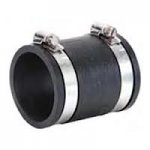- Aug 7, 2011
- 36
- Pool Size
- 15000
- Surface
- Plaster
- Chlorine
- Salt Water Generator
- SWG Type
- CircuPool Universal40
I got some solar heater panels off of Craigslist for dirt cheap and it looks like they're only a couple years old. They are stamped with a "Guardian - Protecting Your Lifestyle" logo and also have a sticker label on them that says "Solar Collector by Harter Industries, Inc" and a serial number. It appears that these "Guardian" panels are made by Aquatherm. Anyone have any experience with Guardian?
I've been doing a lot of reading on valve placement and stuff but still have a couple of questions. There doesn't seem to be much talk about the actual connections between the panels. Do you have to use connectors specifically designed and marketed towards solar panels or is there a DIY solution available at the local hardware store? There doesn't seem to be many places online that sell the connections and parts. Here's one I found that I am leaning towards http://www.bestbuypoolsupply.com/solar-panel-parts.html. I'm putting the panels on the flat roof over my patio and they will be in two sections. A section of the patio is an aluminum roof and another section is shingle. There's a divider between the two sections of roof that bumps up about 2 inches. So I need a flexible pipe to join the two sections and go over the divider. Could I use something like this http://www.homedepot.com/p/t/100211...word=223803&storeId=10051&N=5yc1v&R=100211638 to join the two sections of panels? Also, would something like that work for joining the panels together or would it be better to stick with one made for the purpose?
I've been doing a lot of reading on valve placement and stuff but still have a couple of questions. There doesn't seem to be much talk about the actual connections between the panels. Do you have to use connectors specifically designed and marketed towards solar panels or is there a DIY solution available at the local hardware store? There doesn't seem to be many places online that sell the connections and parts. Here's one I found that I am leaning towards http://www.bestbuypoolsupply.com/solar-panel-parts.html. I'm putting the panels on the flat roof over my patio and they will be in two sections. A section of the patio is an aluminum roof and another section is shingle. There's a divider between the two sections of roof that bumps up about 2 inches. So I need a flexible pipe to join the two sections and go over the divider. Could I use something like this http://www.homedepot.com/p/t/100211...word=223803&storeId=10051&N=5yc1v&R=100211638 to join the two sections of panels? Also, would something like that work for joining the panels together or would it be better to stick with one made for the purpose?


 {well except for the slow drip from one of my PVC joints that I knew about last year after the install}
{well except for the slow drip from one of my PVC joints that I knew about last year after the install}